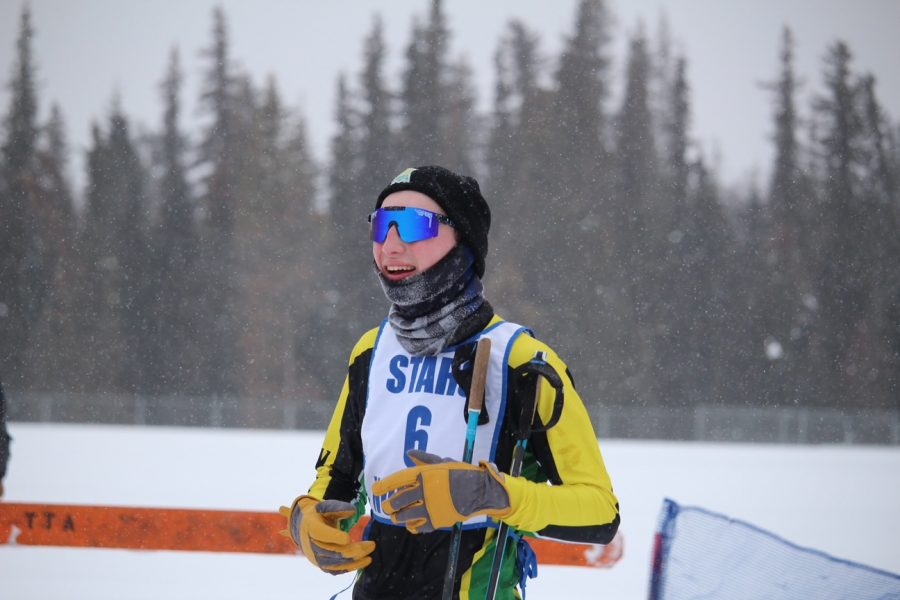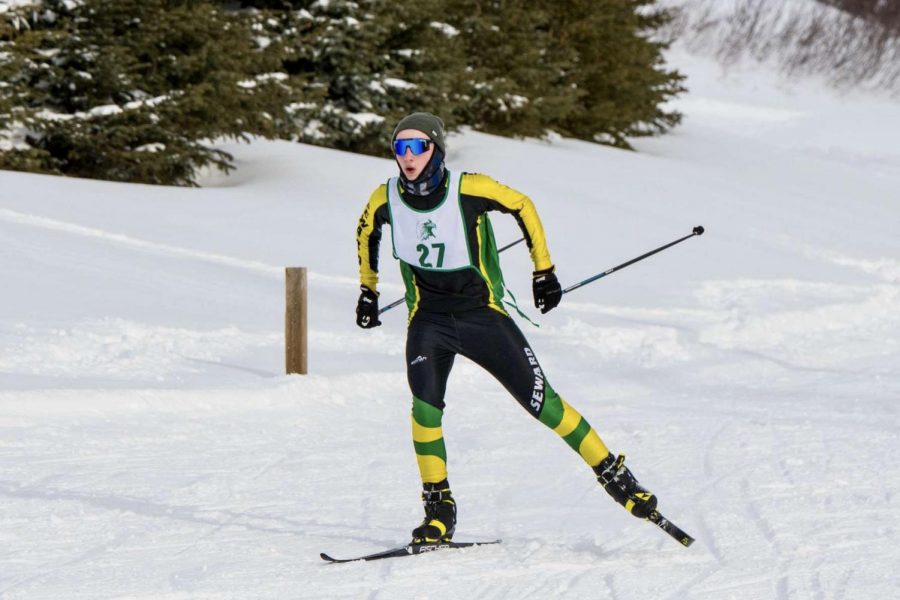The Non-Traditional Season
March 4, 2021
Nordic skiing originated as a means of transportation in Scandinavia more than five thousand years ago. “Ski” comes from the Norse word “skid,” which means a beam or plank of wood. Initially, skiers used one long ski for gliding and one short ski with a tractioned surface to push off in a scooter-like motion. Over time, cross-country skiing evolved into the competitive sport it is today, with a deep-rooted connection to Scandinavian tradition.
At Seward High School, skiers compete in two different styles of skiing. First is classic, called this because it is the most traditional style . Classic is more comparable to cross-country running as the skiers basically run on the snow with a glide between each stride. Second is skate skiing, a more technique-oriented style, which looks similar to ice skating. The Seahawk skiers each have their own preference. Freshman Trevor Guernsey prefers classic because he is better at it, while senior Cody Bryden prefers skate because, in his own words, “It is faster and more enjoyable.”
Like all the other sports this year, the cross-country ski season was anything but traditional. COVID-19 affected everything from practice regimens to race lengths to even race rules. Typically, the skiers would spend one day per week in the weight room strength training. This year, they were unable to.
In their first race of the season, competitors had to wear masks. Bryden said, “It was miserable. I couldn’t breathe. The mask got caught in my mouth.” Fortunately, that mandate was short-lived. In a normal year, the ski team would go to races and stay the night at a school, racing classic one day and skate the other. This year, they weren’t allowed to stay the night, so they had one-day races and only raced one style each week.
Head coach Zach Hazard said, “This season was difficult with all of the hoops to jump through, restrictions, and extra paperwork, but despite that we still had a lot of improvement.”
Freshman Trevor Guernsey was a skier who improved immensely throughout the season. Coach Zach exclaimed, “Trevor cut minutes off of his time almost every week!” When I asked Trevor how he was able to improve so much, he simply responded, “I practiced.”
One of the highlights of the season was the home meet. Instead of having a set distance, they had a set time. It was a thirty-minute race with two loops available; one loop was worth three points and the other was worth five. Each time a skier completed a loop, he or she gained points, and whoever had the most points at the end won.
Last week, the skiers’ season came to an end as they traveled to Government Hill for state. This time, the Seahawks were able to stay the night for the two-day race. State was the first two-day race of the year, and it was the longest race of the season, too, providing quite the challenge for the Seahawks. For two months, races were around five kilometers, but at state they went to ten kilometers for the boys and seven and a half kilometers for the girls.
Cody Bryden, who had been placing high all season, continued his success at state, placing fifth for skate and sixth for classic.
With only two graduating seniors this year, the future is bright for the Seahawks. Hopefully, they will have a more traditional season next year.
Roster:
Freshmen: Aloshia Cross, Trevor Guernsey, John Vanbuskirk
Sophomores: Alexi Walker, Aly Guernsey, Paxton Hill
Junior: Belladonna Proietti
Seniors: Cody Bryden, Sam Paperman






